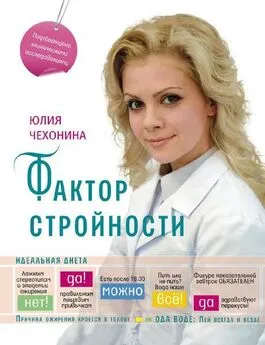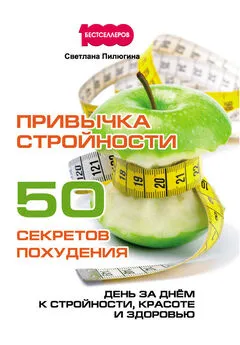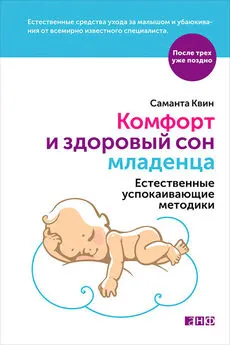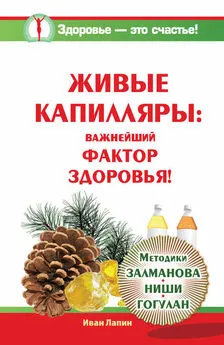Федон Линдберг - X-фактор здорового веса. Как добиться естественной стройности, позаботившись о кишечнике
- Название:X-фактор здорового веса. Как добиться естественной стройности, позаботившись о кишечнике
- Автор:
- Жанр:
- Издательство:Эксмо
- Год:2022
- Город:Москва
- ISBN:978-5-04-162122-3
- Рейтинг:
- Избранное:Добавить в избранное
-
Отзывы:
-
Ваша оценка:
Федон Линдберг - X-фактор здорового веса. Как добиться естественной стройности, позаботившись о кишечнике краткое содержание
В этой книге содержится подробная информация, как именно это происходит, а также инструкции, как влиять на состав микрофлоры, чтобы она поддерживала ваш здоровый вес.
Внимание! Информация, содержащаяся в книге, не может служить заменой консультации врача. Перед совершением любых рекомендуемых действий необходимо проконсультироваться со специалистом.
В формате PDF A4 сохранен издательский макет книги.
X-фактор здорового веса. Как добиться естественной стройности, позаботившись о кишечнике - читать онлайн бесплатно ознакомительный отрывок
Интервал:
Закладка:
8. Sherwood, Linda; Willey, Joanne; Woolverton, Christopher (2013). Prescott’s Microbiology (9th ed.). New York: McGraw Hill. pp. 713–721. ISBN 9780073402406. OCLC 886600661
9. Clarke G et al. Minireview: «Gut microbiota: the neglected endocrine organ». Mol Endocrinol. 2014 Aug;28(8):1221–38
10. Quigley EM. Gut bacteria in health and disease. Gastroenterol Hepatol (N Y). 2013 Sep;9(9):560–9
11. Shen S, Wong CH. Bugging inflammation: role of the gut microbiota. Clin Transl Immunology 2016 Apr 15;5(4):e72. Review
12. Arumugam, M. et al. Enterotypes of the human gut microbiome. Nature 2011 473 (7346): 174–80
13. Wu, G. D et al. Linking Long-Term Dietary Patterns with Gut Microbial Enterotypes. Science 2011 334 (6052): 105–8
14. Zimmer, Carl. Bacteria Divide People Into 3 Types, Scientists Say. The New York Times 2011
15. Keim, Brandon. Gut-Bacteria Mapping Finds Three Global Varieties. Wired Magazine
16. Coghlan, Andy. Each human has one of only three gut ecosystems. New Scientist
17. De Filippo, C.; Cavalieri, D.; Di Paola, M.; Ramazzotti, M.; Poullet, J. B.; Massart, S.; Collini, S.; Pieraccini, G.; Lionetti, P. Impact of diet in shaping gut microbiota revealed by a comparative study in children from Europe and rural Africa”. Proceedings of the National Academy of Sciences 2010 107 (33): 14691–6
18. Guarner, F; Malagelada, J. Gut flora in health and disease. The Lancet 2003 361 (9356): 512–9
19. Sears, Cynthia L. A dynamic partnership: Celebrating our gut flora. Anaerobe 2005 11 (5): 247–51
20. Chedid V, Dhalla S, Clarke JO, Roland BC, Dunbar KB, Koh J, Justino E, Tomakin E, Mullin GE. Herbal therapy is equivalent to rifaximin for the treatment of small intestinal bacterial overgrowth. Glob Adv Health Med. 2014 May;3(3):16–24
21. Beaugerie, Laurent; Petit, Jean-Claude. Antibiotic-associated diarrhoea. Best Practice & Research Clinical Gastroenterology 2004 18 (2): 337–52
22. Stephen, A. M.; Cummings, J. H. (1980). The Microbial Contribution to Human Faecal Mass. Journal of Medical Microbiology 13 (1): 45–56
23. Lozupone, Catherine A.; Stombaugh, Jesse I.; Gordon, Jeffrey I.; Jansson, Janet K.; Knight, Rob. Diversity, stability and resilience of the human gut microbiota. Nature 2012 489 (7415): 220–30
24. Tap, Julien; Mondot, Stanislas; Levenez, Florence; Pelletier, Eric; Caron, Christophe; Furet, Jean-Pierre; Ugarte, Edgardo; Muñoz-Tamayo, Rafael; Paslier, Denis L. E.; Nalin, Renaud; Dore, Joel; Leclerc, Marion. Towards the human intestinal microbiota phylogenetic core. Environmental Microbiology 2009 11 (10): 2574–84
25. O’Hara, Ann M; Shanahan, Fergus. The gut flora as a forgotten organ. EMBO Reports 2006 7 (7): 688–93
26. Khanna S, Tosh PK. A clinician’s primer on the role of the microbiome in human health and disease. Mayo Clin. Proc. 2014 89 (1): 107–14
27. Neu J, Rushing J. Cesarean versus Vaginal Delivery: Long term infant outcomes and the Hygiene Hypothesis. Clinics in perinatology. 2011;38(2):321–331
28. Yatsunenko, T.et al. Human gut microbiome viewed across age and geography. Nature 2012 486 (7402): 222–227
29. Coppa G.V, Giovanni V; Bruni, Stefano; Morelli, Lorenzo; Soldi, Sara; Gabrielli, Orazio. The First Prebiotics in Humans. Journal of Clinical Gastroenterology 2004 38 (6 Suppl): S80–3
30. Coppa, G.V.; Zampini, L.; Galeazzi, T.; Gabrielli, O. Prebiotics in human milk: A review. Digestive and Liver Disease 2006 38: S291–4
31. Fanaro, S; Chierici, R; Guerrini, P; Vigi, V. Intestinal microflora in early infancy: Composition and development. Acta paediatrica 2003 91 (441): 48–55
32. Wu, G. D. et al. Linking Long-Term Dietary Patterns with Gut Microbial Enterotypes. Science 2011 334 (6052): 105–8
33. De Filippo, C.; Cavalieri, D.; Di Paola, M.; Ramazzotti, M.; Poullet, J. B.; Massart, S.; Collini, S.; Pieraccini, G.; Lionetti, P. Impact of diet in shaping gut microbiota revealed by a comparative study in children from Europe and rural Africa. Proc. Natl. Acad. Sci. U.S.A. 2010 107 (33): 14691–14696
34. Jonkers, Daisy M.A.E. Microbial perturbations and modulation in conditions associated with malnutrition and malabsorption. Best Practice & Research Clinical Gastroenterology 2016 30 (2): 161–172
35. Million, Matthieu; Diallo, Aldiouma; Raoult, Didier. Gut microbiota and malnutrition (PDF). Microbial Pathogenesis 2016
36. Biagi E, Candela M, Turroni S, Garagnani P, Franceschi C, Brigidi P. Ageing and gut microbes: perspectives for health maintenance and longevity. Pharmacol Res. 2013 Mar;69(1):11–20
37. Ng M, et al. Global, regional, and national prevalence of overweight and obesity in children and adults during 1980–2013: a systematic analysis for the Global Burden of Disease Study 2013. Lancet 2014 Aug 30;384(9945):766–8
38. Cani PD, Bibiloni R, Knauf C, Waget A, Neyrinck AM, Delzenne NM, Burcelin R. Changes in gut microbiota control metabolic endotoxemia-induced inflammation in high-fat diet-induced obesity and diabetes in mice. Diabetes 2008 Jun;57(6):1470–81
39. Carding S, Verbeke K, Vipond DT, Corfe BM, Owen LJ. Dysbiosis of the gut microbiota in disease. Microbial Ecology in Health and Disease 2015;26:10.3402/mehd.v26.26191
40. Norris V, Molina F, Gewirtz AT. Hypothesis: bacteria control host appetites. J Bacteriol. 2013 Feb;195(3):411–6
41. Ley RE, Turnbaugh PJ, Klein S, Gordon JI. Microbial ecology: human gut microbes associated with obesity. Nature 2006 Dec 21; 444(7122):1022–3
42. Turnbaugh PJ, Ley RE, Mahowald MA, Magrini V, Mardis ER, Gordon JI. An obesity-associated gut microbiome with increased capacity for energy harvest. Nature. 2006 Dec 21;444(7122):1027–31
43. Bäckhed F, Ding H, Wang T, Hooper LV, Koh GY, Nagy A, Semenkovich CF, Gordon JI. The gut microbiota as an environmental factor that regulates fat storage. Proc Natl Acad Sci USA. 2004 Nov 2;101(44):15718–23
44. Ridaura VK, et.al. Gut microbiota from twins discordant for obesity modulate metabolism in mice. Science. 2013 Sep 6;341(6150):1241214
45. J.M. Goodson, D. Groppo, S. Halem, E. Carpino. Is Obesity an Oral Bacterial Disease? J Dent Res. 2009 June; 88(6): 519–523
46. Wisker E, Maltz A, Feldheim W. Metabolizable energy of diets low or high in dietary fiber from cereals when eaten by humans. J Nutr. 1988 Aug;118 (8):945–52
47. Robert J. Shulman, Monica E. Jarrett, Kevin C. Cain, Elizabeth Broussard, Margaret M. Heitkemper. Associations among Gut Permeability, Inflammatory Markers and Symptoms in Patients with Irritable Bowel Syndrome. J Gastroenterol. 2014 November; 49(11): 1467–1476
48. QiQi Zhou, Buyi Zhang, G. Nicholas Verne. Intestinal Membrane Permeability and Hypersensitivity in the Irritable Bowel Syndrome. Pain 2009 November; 146(1–2): 41–46
49. Arseima Y. Del Valle-Pinero, Hendrick E. Van Deventer, Nicolaas H. Fourie, Angela C. Martino, Nayan S. Patel, Alan T. Remaley, Wendy A. Henderson. Gastrointestinal permeability in patients with irritable bowel syndrome assessed using a four probe permeability solution. Clin Chim Acta 2013 March 15; 418: 97–101
50. Stephan C Bischoff, Giovanni Barbara, Wim Buurman, Theo Ockhuizen, Jörg-Dieter Schulzke, Matteo Serino, Herbert Tilg, Alastair Watson, Jerry M Wells. Intestinal permeability – a new target for disease prevention and therapy. BMC Gastroenterol. 2014; 14: 189
51. Andrea Michielan, Renata D’Incà. Intestinal Permeability in Inflammatory Bowel Disease: Pathogenesis, Clinical Evaluation, and Therapy of Leaky Gut. Mediators Inflamm. 2015; 2015: 628157
52. Moreira AP, Texeira TF, Ferreira AB, Peluzio Mdo C, Alfenas Rde C. Influence of a highfat diet on gut microbiota, intestinal permeability and metabolic endotoxaemia. Br J Nutr. 2012;108:801–809
53. Pendyala S, Walker JM, Holt PR. A high-fat diet is associated with endotoxemia that originates from the gut. Gastroenterology 2012;142: 1100–1101
54. Engen PA, Green SJ, Voigt RM, Forsyth CB, Keshavarzian A. The Gastrointestinal Microbiome: Alcohol Effects on the Composition of Intestinal Microbiota. Alcohol Res. 2015;37(2):223-36. Review
55. Chen SW, Ma YY, Zhu J, Zuo S, Zhang JL, Chen ZY, Chen GW, Wang X, Pan YS, Liu YC, Wang PY. Protective effect of 1,25-dihydroxyvitamin D3 on ethanol-induced intestinal barrier injury both in vitro and in vivo. Toxicol Lett. 2015 Sep 2;237(2):79–88
56. Amasheh M, Andres S, Amasheh S, Fromm M, Schulzke JD. Barrier effects of nutritional factors. Ann N Y Acad Sci. 2009;1165:267–273
57. Amasheh M, Andres S, Amasheh S, Fromm M, Schulzke JD. Barrier effects of nutritional factors. Ann N Y Acad Sci. 2009;1165:267–273
58. Lima AA, Soares AM, Lima NL, Mota RM, Maciel BL, Kvalsund MP, Barrett LJ, Fitzgerald RP, Blaner WS, Guerrant RL. Effects of vitamin A supplementation on intestinal barrier function, growth, total parasitic, and specific Giardia spp infections in Brazilian children: a prospective randomized, double-blind, placebo-controlled trial. J Pediatr Gastroenterol Nutr. 2010 Mar; 50(3):309–15
59. Kong J, Zhang Z, Musch MW, Ning G, Sun J, Hart J, Bissonnette M, Li YC. Novel role of the vitamin D receptor in maintaining the integrity of the intestinal mucosal barrier. Am J Physiol Gastrointest Liver Physiol. 2008;294:208–216
60. Willemsen LE, Koetsier MA, Balvers M, Beermann C, Stahl B, van Tol EA. Polyunsaturated fatty acids support epithelial barrier integrity and reduce IL-4 mediated permeability in vitro. Eur J Nutr. 2008 Jun;47(4): 183–91
61. Rosella O, Sinclair A, Gibson PR. Polyunsaturated fatty acids reduce non-receptor-mediated transcellular permeation of protein across a model of intestinal epithelium in vitro. J Gastroenterol Hepatol. 2000 Jun;15(6):626–1
62. Rosenfeldt V, Benfeldt E, Valerius NH, Paerregaard A, Michaelsen KF. Effect of probiotics on gastrointestinal symptoms and small intestinal permeability in children with atopic dermatitis. J Pediatr. 2004;145:612–616
63. Stratiki Z, Costalos C, Sevastiadou S, Kastanidou O, Skouroliakou M, Giakoumatou A, Petrohilou V. The effect of a bifidobacter supplemented bovine milk on intestinal permeability of preterm infants. Early Hum Dev. 2007;83: 575–579
64. Madsen K, Cornish A, Soper P, McKaigney C, Jijon H, Yachimec C, Doyle J, Jewell L, De Simone C. Probiotic bacteria enhance murine and human intestinal epithelial barrier function. Gastroenterology. 2001;121: 580–591
65. Zareie M, Johnson-Henry K, Jury J, Yang PC, Ngan BY, McKay DM, Soderholm JD, Perdue MH, Sherman PM. Probiotics prevent bacterial translocation and improve intestinal barrier function in rats following chronic psychological stress. Gut 2006;55:1553–1560
66. Ukena SN, Singh A, Dringenberg U, Engelhardt R, Seidler U, Hansen W, Bleich A, Bruder D, Franzke A, Rogler G, Suerbaum S, Buer J, Gunzer F, Westendorf AM. Probiotic Escherichia coli Nissle 1917 inhibits leaky gut by enhancing mucosal integrity. PLoS One 2007;2:e1308
67. Corridoni D, Pastorelli L, Mattioli B, Locovei S, Ishikawa D, Arseneau KO, Chieppa M, Cominelli F, Pizarro TT. Probiotic bacteria regulate intestinal epithelial permeability in experimental ileitis by a TNF-dependent mechanism. PLoS One 2012;7:e42067
68. Anderson RC, Cookson AL, McNabb WC, Park Z, McCann MJ, Kelly WJ, Roy NC. Lactobacillus plantarum MB452 enhances the function of the intestinal barrier by increasing the expression levels of genes involved in tight junction formation. BMC Microbiol. 2010;10:316
69. Berkes J, Viswanathan VK, Savkovic SD, Hecht G. Intestinal epithelial responses to enteric pathogens: effects on the tight junction barrier, ion transport, and inflammation. Gut 2003;52:439–451
Читать дальшеИнтервал:
Закладка:










